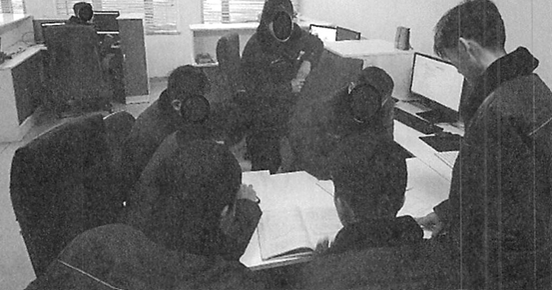People the world over are struggling with sweltering hot temperatures fueled by climate change. The summer's first heatwave has a firm grip on Southern Europe, parts of the US and the UK.
Temperatures in southern Spain reached 46 degrees Celsius (115 degrees Fahrenheit) on Saturday which is a new record for June, the national weather agency said. Barcelona has also set a new record as hottest June ever recorded.
Authorities in the Mediterranean have urged people to seek shelter from the heat. France and Italy, among others, have dispatched ambulances near tourist hotspots to treat people suffering from heatstroke.
Fires fed by the heat and strong winds broke out on Sunday in France and Turkey, while Greece and Italy have also been fighting fires connected to unusually hot and dry conditions.
Last week, Chinese authorities issued the second-highest heat warning for the capital Beijing and other regions on one of its hottest days of the year. The World Meteorological Organziation says Asia is heating up more than twice as fast as the rest of the world because of its large landmass.
What's the impact of heat on people and societies?
Heatwaves are the deadliest type of extreme weather globally, with hundreds of thousands of people dying from heat-related causes annually. Among the particularly vulnerable are people over 65, pregnant women, children and those with chronic or underlying health conditions.
The first early-season heatwaves are particularly deadly, since people are often less prepared and their bodies haven't yet become accustomed to higher temperatures.
There are three main physical risks associated during with heatwaves: Dehydration, overheating as well as heat exhaustion and heatstroke.
Severe heat does not only impact the body but also disrupts society as we know it. The UN's Children's Fund (UNICEF) says one in 5 kids — that's close to half a billion in total — live in areas that experience at least double the number of extremely hot days per year compared to six decades ago. Many don't have the infrastructure such as air-conditioning to help them cope.
 India has also reported extreme temperatures in recent weeksImage: Arun Sankar/AFP/Getty Images
India has also reported extreme temperatures in recent weeksImage: Arun Sankar/AFP/Getty ImagesIn May, Pakistan experienced a nationwide heatwave that saw temperatures hit 45 degrees Celsius in the country's most populous province of Punjab. Several others cut school hours or started summer holidays early. Heatwaves have also disrupted schooling in South Sudan and the Philipinnes this year.
Equally, extreme heat impacts when people can work. Some countries in hotter parts of the world traditionally take a midday "siesta" break, and now others in ordinarily cooler places are talking about how to manage working hours when temperatures rise.
Infrastructure such as roads, railways and bridges are also impacted by runaway heat. Standard asphalt road surfaces not made for hot weather tend to rut and can literally melt, while railway tracks can buckle under and bridges can expand and deform.
How are hotter temperatures connected to climate change?
Continuing a trend, 2024 saw the hottest 12-months on record. Based on six international data sets, the WMO recently reported that every year in the past decade features among the top ten for record-breaking temperatures.
"We've had not just one or two record-breaking years, but a full ten-year series. This has been accompanied by devastating and extreme weather, rising sea levels and melting ice, all powered by record-breaking greenhouse gas levels due to human activities," said WMO Secretary-General Celeste Saulo.
Human-caused climate change has increased the frequency and intensity of heatwaves since the 1950s. Every fraction of a degree of warming matters and will lead to them becoming even stronger and happening yet more often.
Coal, oil and gas are by far the largest contributors to climate change. When these fossil fuels are burned to power combustion engine vehicles, generate electricity, make plastics and heat homes, they release greenhouse gas emissions. These act like a blanket around Earth, trapping the sun's heat and contributing to increasing heatwaves.
Extreme heat can also lead to a greater risk of other types of disasters, such as drought and wildfires.
How can we live with rising heat?
Healthcare experts advise people to stay out of the heat wherever possible, to avoid strenuous activity and to drink plenty of fluids. But not alcohol or caffeine.
Homes can be protected to some degree by drawing blinds or curtains and keeping windows closed during the day and opening them at night when the air is cooler. Dressing for summer in light-colored clothing that reflects heat and sunlight can help, as can electric fans if the temperature is below 35 degrees Celsius.
Long-term strategies to make the heat more bearable include climate-proofing cities by greening spaces and planting trees along streets. This not only provides shade but reduces the heat trapped in concrete.
Overall, experts say boosting the green energy transition by using renewable souces of energy that do not release heat-trapping emissions, is key to keeping global temperatures down.
In 2024, 40% of the world's electricity was generated using renewable energy. Solar was the main driver of this trend, according to a report by global energy think tank ember.
Edited by: Tamsin Walker

 3 hours ago
2
3 hours ago
2








